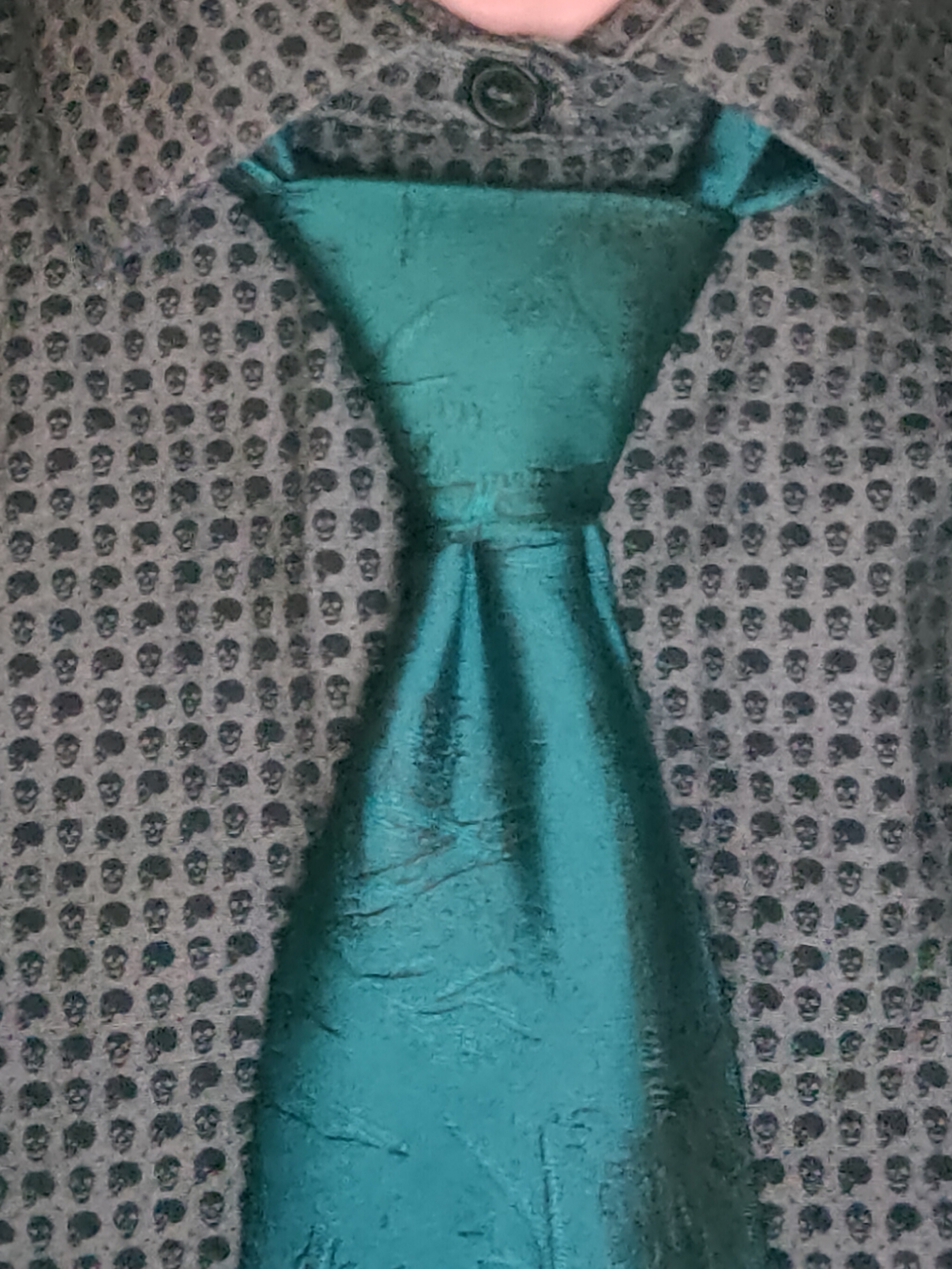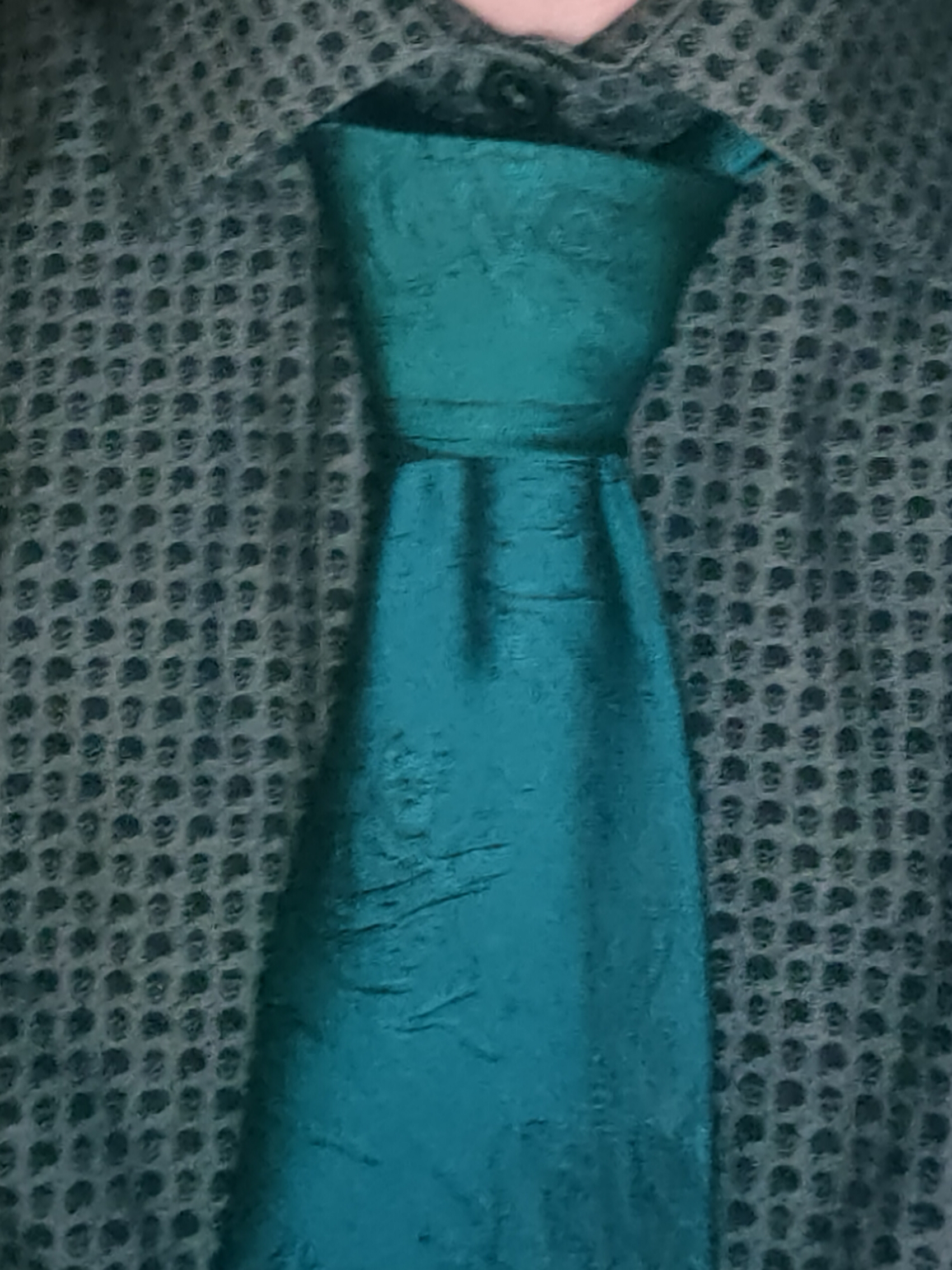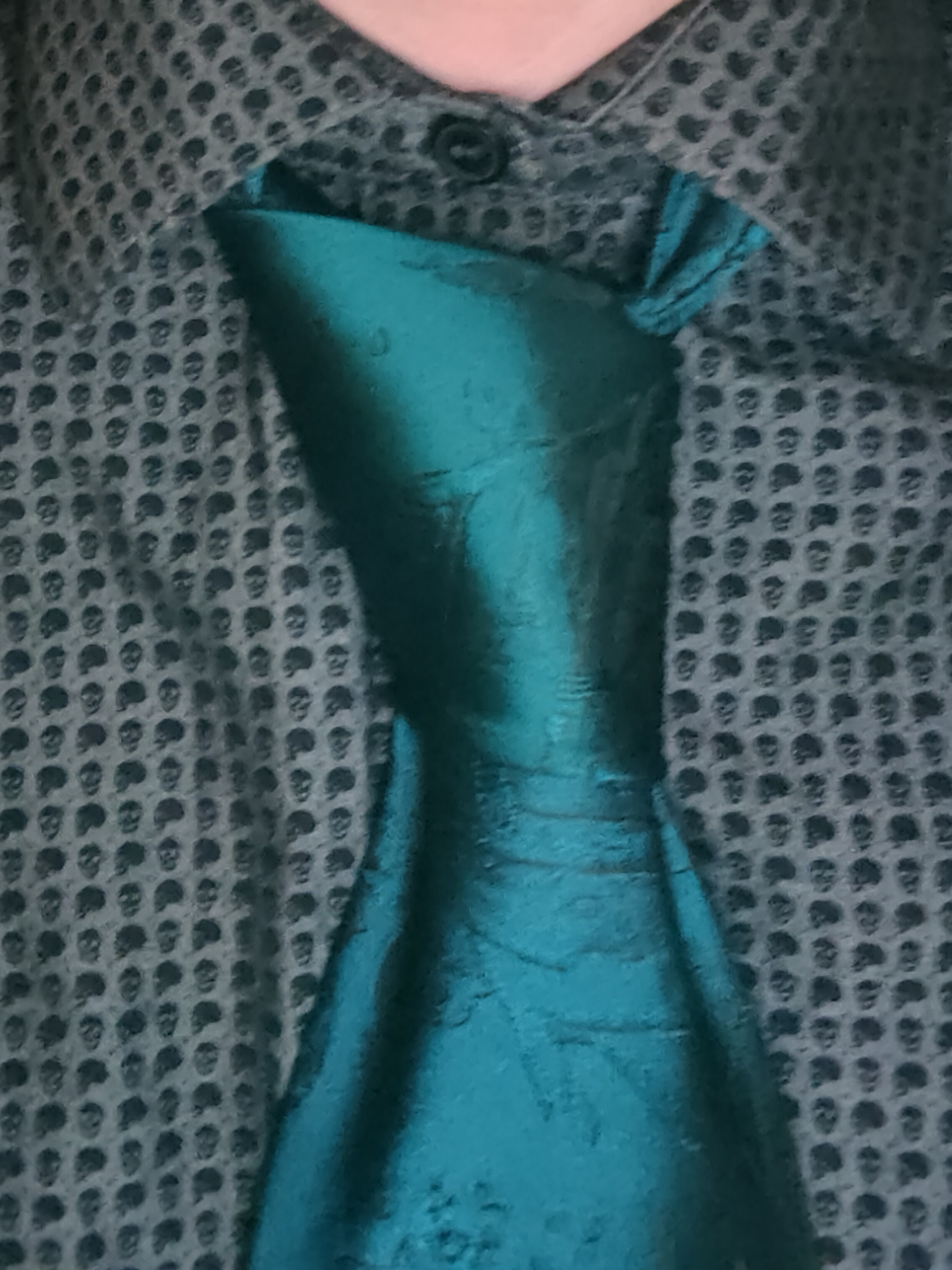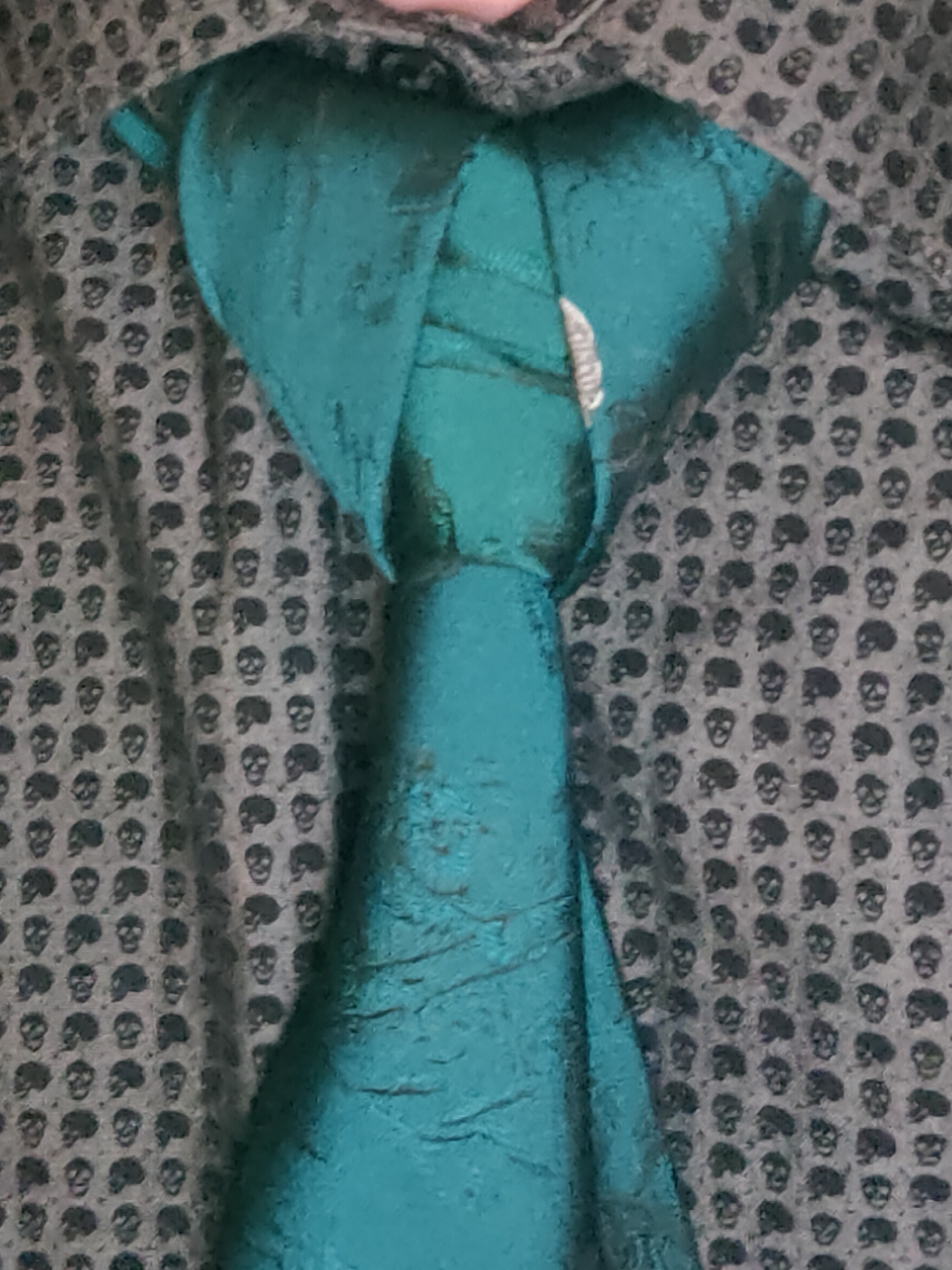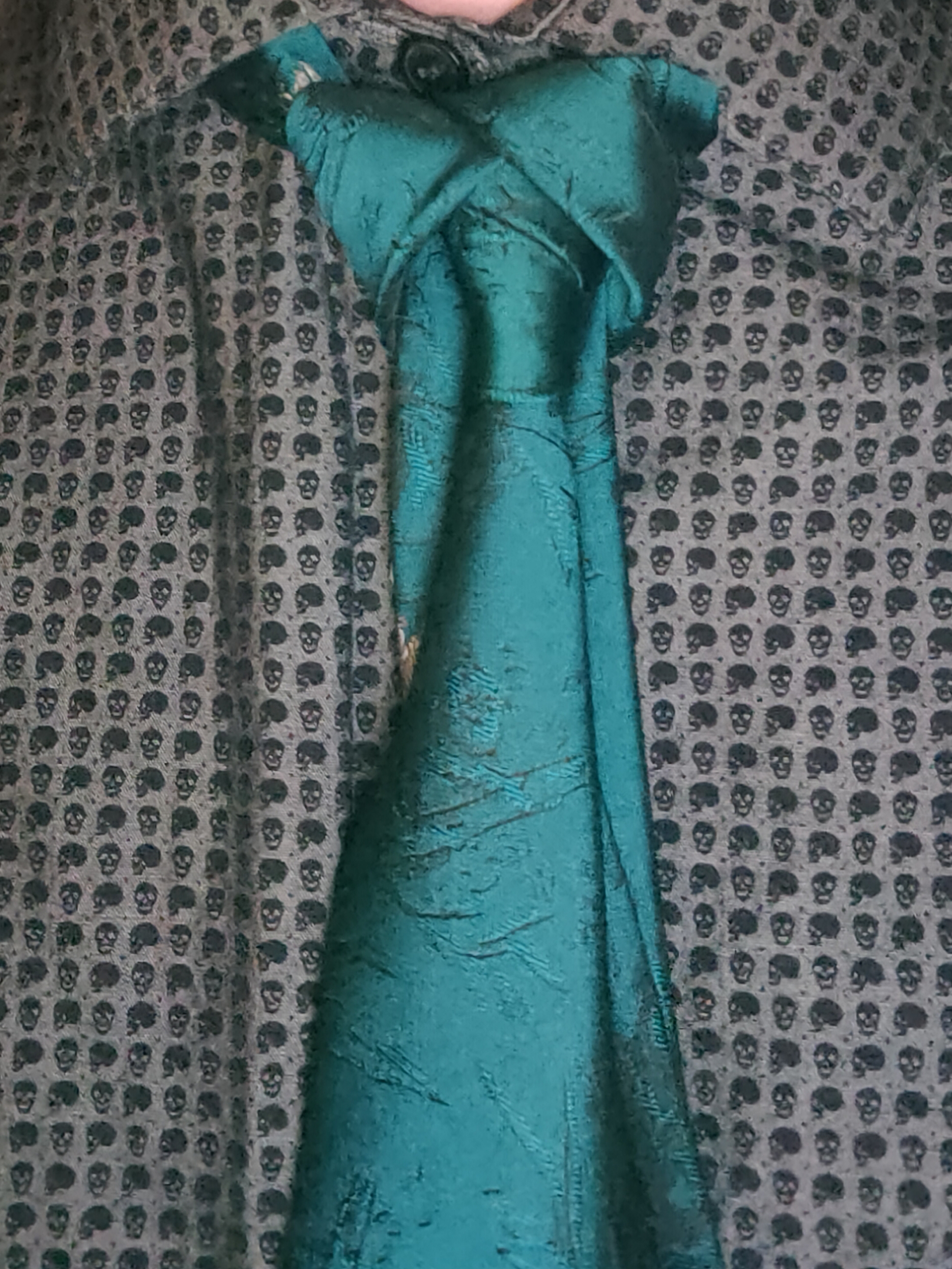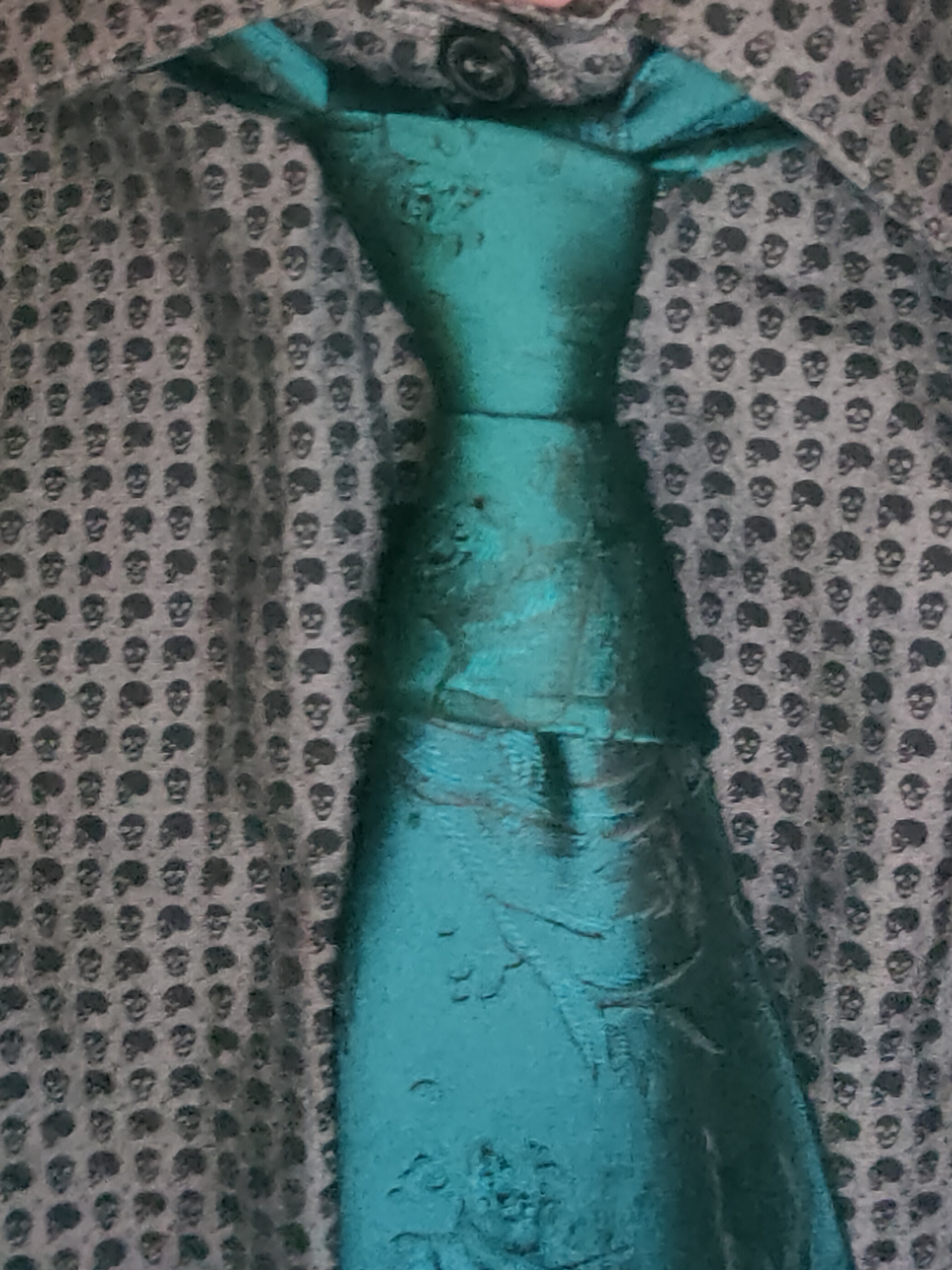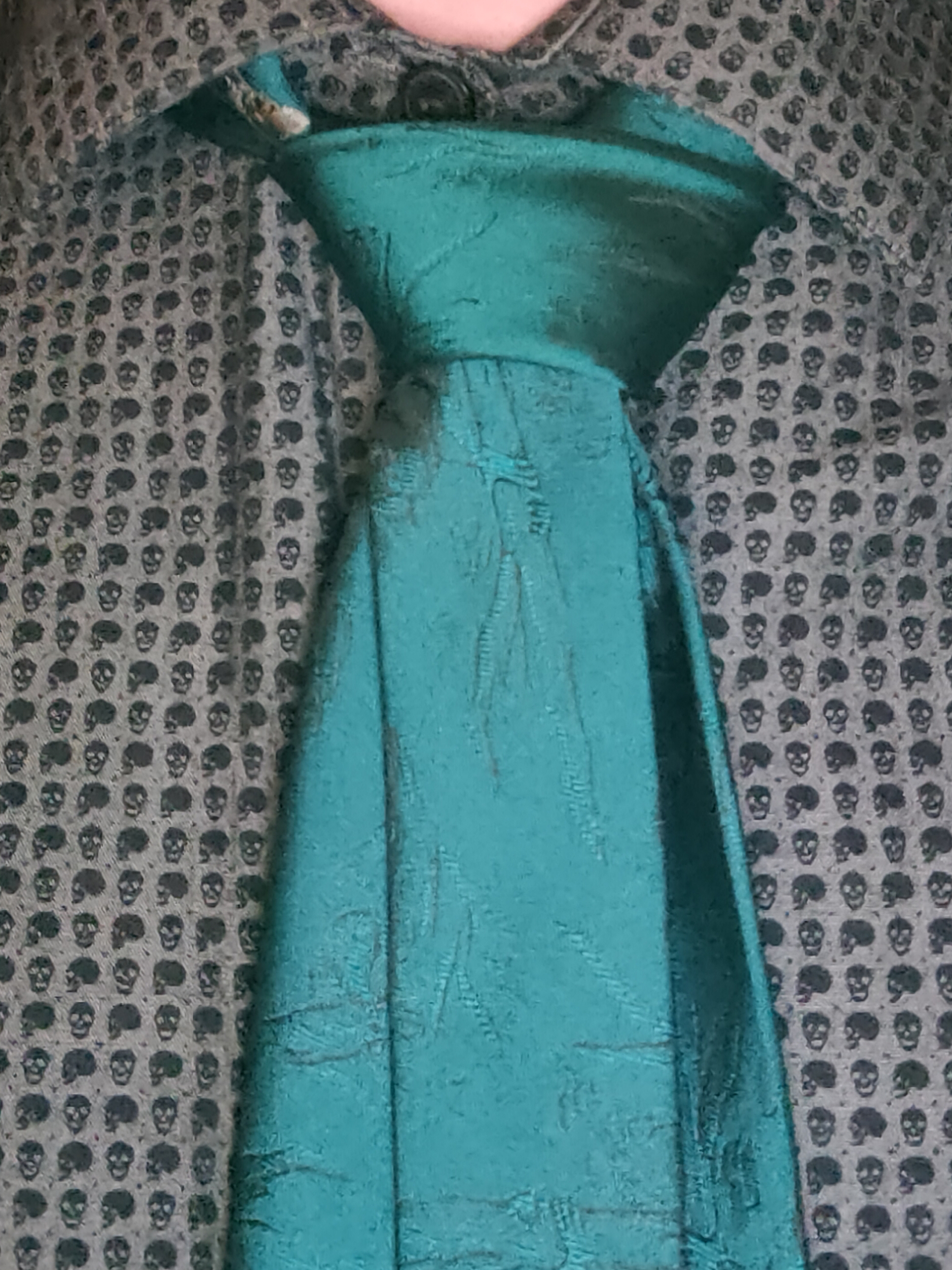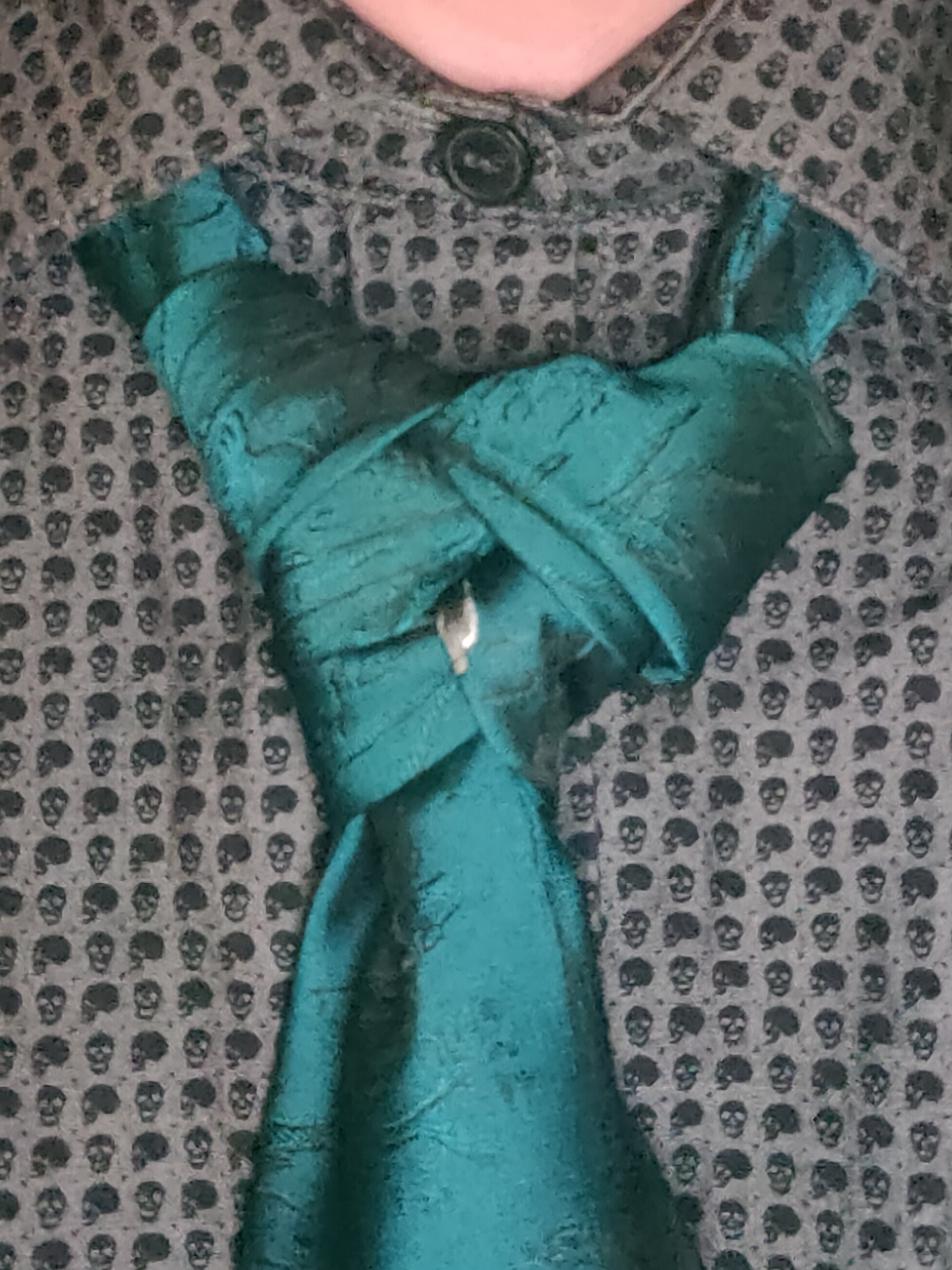The first line should indicate which end of the tie you are moving.
Start with it around the back of your neck, both ends laying flat down your chest.
If it says tie with large end, place the small end above your target length, farther up based on how many moves the knot is.
If it says tie with small end, place the large end slightly below your target length.
If the first line says reversed, the backside of the knot should face outward, otherwise keep the backside facing your chest.
Keep about an inch between the knot and your neck while tying.
Once finished, adjust and tighten as desired to smooth out the knot. Then pull down on the non-tying end to bring it up to your neck. Tuck the small end into the strap on the back of the tie, and fold down your collar.
To release, remove the small end from the strap on the back of the tie. Then, either untie the knot itself, or pull the knot down from the off-side connection to the collar.
